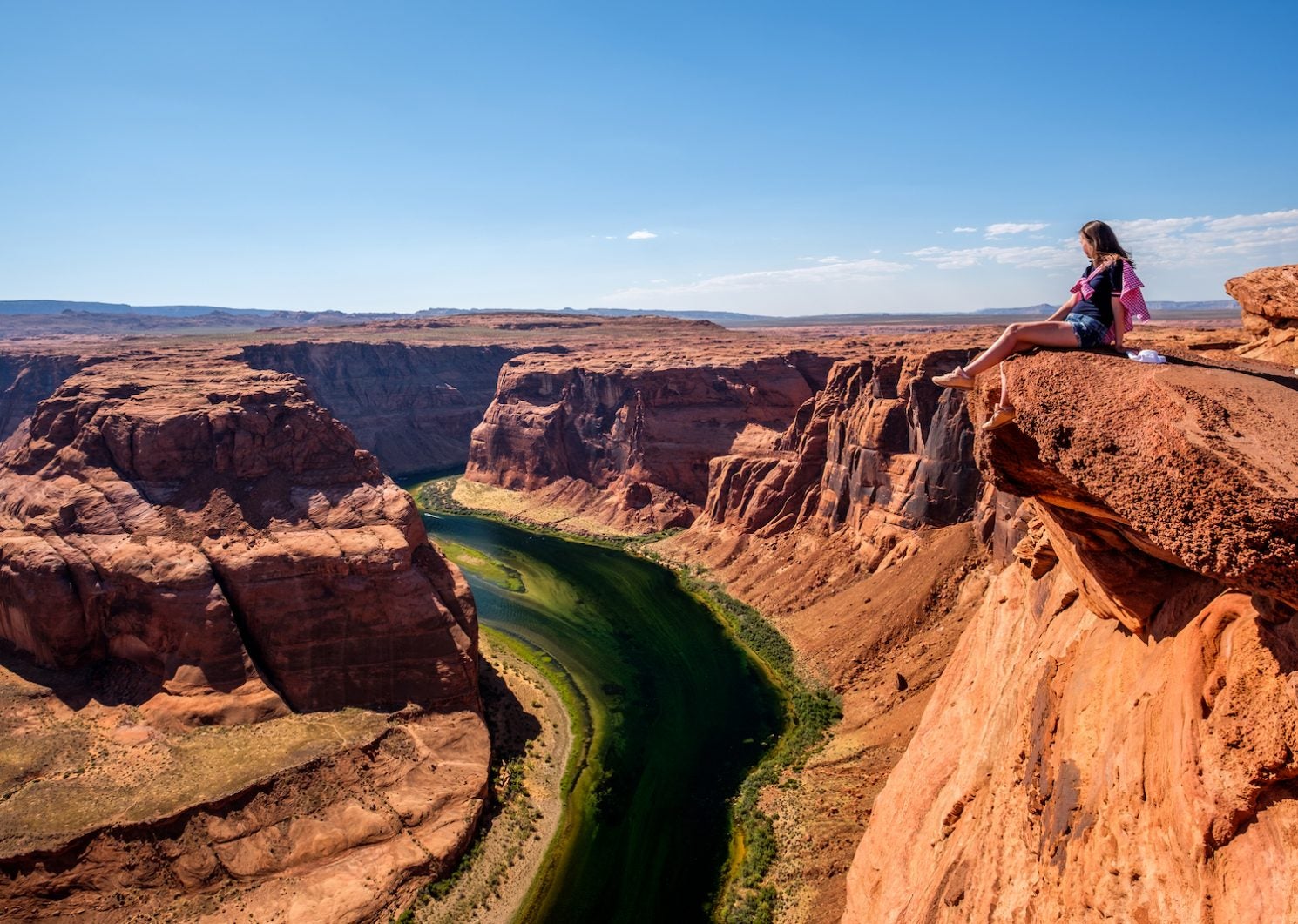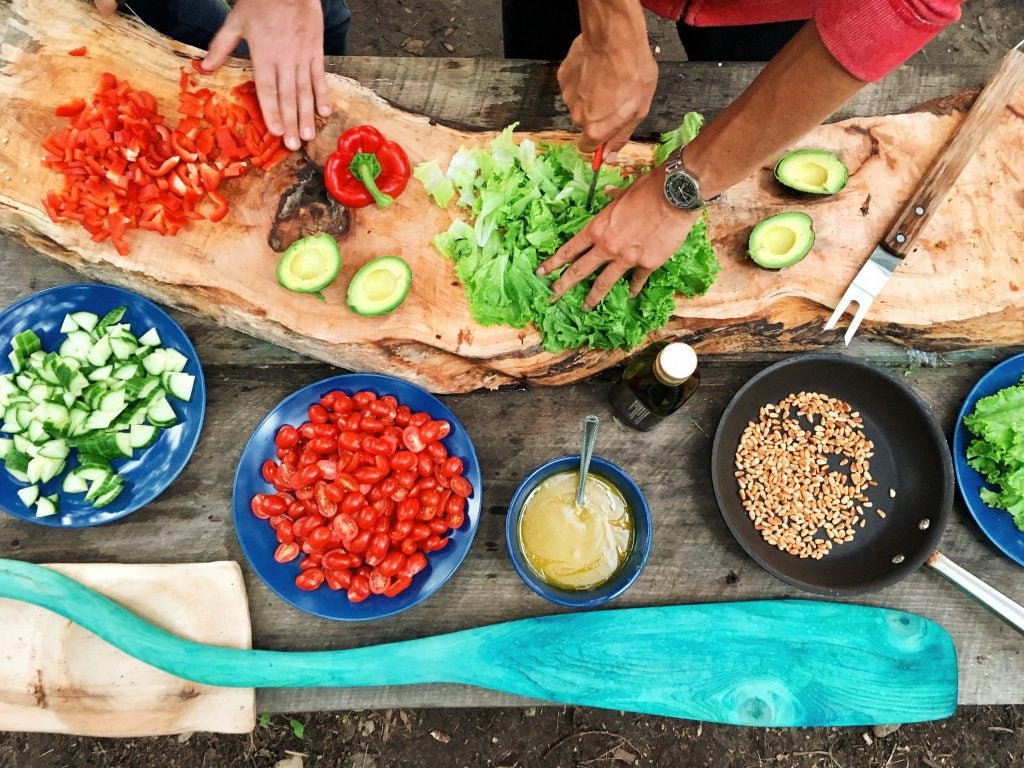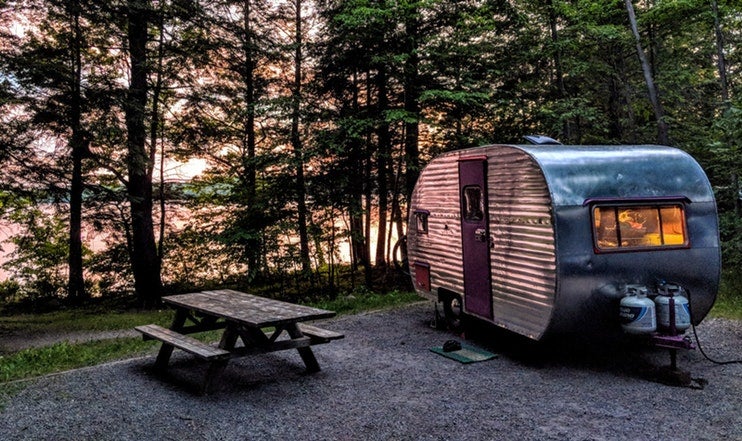One outdoor writer grapples with the issue of geotagging photos of outdoor places. Should we protect their locations from the crowds, or encourage more people to get outdoors? Is it possible to do both?
About 40 minutes outside Moab, UT, and miles down Highway 128, Fisher Towers come into view: a modest campground with five sites sits at the base of melting sandstone walls. Climbers come here to stand atop Ancient Art’s corkscrew, hikers come for the 360-degree vistas along the Fisher Towers Trail, and anglers to catch Channel Catfish and Walleye’s along the Colorado River.
We live in an era of “get out and play.” Major players in the outdoor recreation community run campaigns focused on opting outside, living without limits, and exploring more. Off the top of my head I can rattle 20 hashtags related to getting outside. In fact, these two alone, #thegreatoutdoors and #greatoutdoors, log over 5 million photos on Instagram. The Dyrt itself exists so people can get outside and reconnect to the natural world with one less blocker. We regularly use social media and #CampResponsibly to advocate for the camping experience.
But hashtags aren’t the hot issue right now: geotagging is.
What is Geotagging and Why Does it Matter to the Outdoors?
Geotagging: Adding geographical information to a piece of content on social media.
If you aren’t familiar with the geotagging debate, here’s a little background: before social media, hundreds of thousands of places were relatively undiscoverable. You heard about the Colorado River wrapping around sandstone cliffs at a place called Horseshoe Bend from a friend at a potluck, or the hiking guru at REI. Havasupai Falls saw a handful of visitors each year, until the dawn of Instagram when roughly 900,000 tags cropped up about that area. Many of them were geotagged, providing a clickable map with a pinpoint to find out exactly how you could take that photo, too.
Today, Havasu Falls permits are almost impossible to obtain, because so many people know about this magical place and want access. Construction cones now line the road towards Horseshoe Bend as crews expand the parking area, and implement a fence at the edge of the cliff.
The culprit? Social media and geotagging.
Delicate ecosystems, like that found on the Havasupai Tribal Land, or in alpine environments, can’t sustain the impact of hundreds or thousands or hundreds of thousands of visitors. With the rise of social media, and the growing number of influential users who build brands and businesses by reaching massive audiences, more and more people are finding out about our fragile, wild lands. And those precious places are facing the burden of overwhelming crowds — especially when those crowds are told exactly how to find them.
That’s why Leave No Trace recently added social media guidelines which remind people of the impact social media continues to have on the outdoors. In their guidelines, LNT encourages outdoor users to tag thoughtfully, be mindful of what their images portray, give back to places they love, and encourage and inspire Leave No Trace in social media posts.
This update to the Leave No Trace policies came amidst a rising chorus of environmentalists and Instagram users discouraging the use of geotags, in order to protect the places that aren’t already a hot destination — but could quickly become one if word got out.
The Social “Community”
Social media is both a blessing and a curse. We can use it as a way to find motivation and inspiration. We see beautiful places, and then (maybe) seek out those beautiful places. We can amplify messages with social media, but then we quickly lose control of who receives those messages — and how they use them. With the rise of your follower count, your audience of “community” reaches beyond your friends.
On Instagram especially, you probably don’t know who’s reading your posts; it could be Responsible Randy who collects trash on every hike, or a new outdoor recreationalist who’s unfamiliar with Leave No Trace practices.
And if your “home” is on red desert back roads, you certainly don’t want thousands of strangers knowing your exact GPS coordinates. Like Brianna Madia, who spends well over half the year ambling down abandoned dirt roads in Utah’s desert. In an interview with The Dyrt she said, “If I were to drop a pin to that place or tell 190,000 people how to get there…it would almost be the equivalent of someone geotagging their driveway.”
To Be Honest, I’m Torn
I can’t help but wonder, then: why post in the first place?
If I take a photo and upload it to Instagram, and someone comments: ‘Megan! Where is this incredible place?!’ You bet I’d give them the GPS coordinates and detailed directions. Hell, I’d probably invite them out the next weekend to show them myself.
If you don’t want to share your location, why share the photo at all? If the goal is to protect a place, to keep it sacred, and special, and preserved, then why put it on a social platform, where, inevitably, someone (or hundreds or someones) will ask where you are?
Then again, when I post a photo, friends and family members are likely the only ones to see that picture. That is not the case with Instagram’s most influential users. A geotagged post from Brianna Madia would go out to over 200,000 people.
[bctt tweet=”We want everyone to have the experience of stumbling upon someplace magical by way of wrong turns, two hours on washboard roads, and through tracing lines on a paper map with the moon as our light.” via=”no”]
But then I circle back. At the risk of sounding like a whiny outdoor recreationalist, I feel left out. I see photos from these people every day — photos that often offer glimpses into their lives. Captions show up on my feed riddled with personal details and bouts of vulnerability. Because of this, I’ve had conversations with friends about accounts I follow on Instagram, the way my parents might gossip about their neighbors. “Did you hear? Bucket and Dagwood got into a bottle of pills, but it sounds like they’re going to be okay.”
They share so much. Why not share the location of these stunning shots so that I (and you) can enjoy them, too?
Maybe this conversation is a wake up call. Many of these people I follow on Instagram, whose lives I feel I know personally, are not my friends. For many of them, posting to Instagram is a part of their job. And if they’re a member of the outdoor community, then part of their job is to treat the outdoors responsibly: follow leave no trace principles, and don’t encourage hundreds of thousands of people to show up to a beautiful location in the middle of nowhere — where both the land, and the people trying to reach it, could be hurt.
I understand that many people in my industry don’t see eye to eye with my frustration. I’ve seen more and more posts from influencers in the outdoor sphere defending their omission of geotagging to frustrated followers who want to know — where is this??
But isn’t encouraging people to love these places part of protecting them? And how can they love them if they don’t know where they are? This is a niche debate, focused on backroads and badlands, shrouded in good intentions. And it’s a conversation that goes back and forth, mostly in the outdoor industry. But I want us to keep reaching beyond these circles of campers and climbers and vanlifers, to reach those people who might still not know about Horseshoe Bend. Don’t they deserve to find these places, and enjoy them, too? Can’t geotagging on Instagram help them to do that?
Perhaps I long for the days when photos had to be printed, and rainforests and desert spires could only be found on the pages of National Geographic. When we didn’t have to worry about hundreds or thousands of people showing up to hike through delicate ecosystems or atop cryptobiotic soil — but a thoughtful story and a stunning photo could still encourage a handful of people to go experience those things for themselves.
[bctt tweet=”We want to be inclusive, but we also feel a massive responsibility to protect places in the best way we think we can. That often feels messy.” via=”no”]
How We Can Responsibly Spread the Word
With the Internet and social media, the world shrunk – places that weren’t accessible now are. About a million more households have started camping every year since 2014. People are catching on to how great it is out there. Which is awesome, until it’s not.
A key component to turning those new campers into responsible outdoor recreationalists is education. I want these people to know what’s out there. And I also want them to know how to treat those places right.
Like the Leave No Trace organization asks in their guidelines, “What if every social media post also included a message of stewardship?”
Many of us wish to preserve or conserve these places where we’ve lost and found ourselves. We want them to stay protected for future generations to enjoy. We want everyone to have the experience of stumbling upon someplace magical by way of wrong turns, two hours on washboard roads, by tracing lines on a paper map with the moon as our light.
Finding Balance
The outdoor community continues to grow, and right now we’re feeling those growing pains. We want to be inclusive, but we also feel a massive responsibility to protect places in the best way we think we can. That often feels messy. Many of us are still feeling our way through this geotagging debate and struggling with how to encourage people to get outside, without contributing to the influx of crowds leaving more than footprints as they go from Instagram inspiration to dirt road discovery.
[bctt tweet=”Think about how many Horseshoe Bend’s are still out there in the world. Put on your adventure hat, learn to use a map and compass, and go find one.” via=”no”]
As our community grows, we’ll need more advocates and stewards participating in trail work, writing articles, and expanding this conversation. The LNT website says, “Invest your own sweat equity into the spaces and places you care about.”
In writing this piece, I’ve found both sides of this debate filled with unanswerable questions, most wrapped up in larger issues surrounding social media: like why and how we use it, and whether it strengthens or weakens our communities.
At the end, I leave torn. Social media provides a way to share our lives with one another. It’s a space for inspiration, trip planning, how-to’s, recommendations, and cat videos. Used without intention, though, it can lead to larger issues, like reckless land use and ecological destruction.
Beyond Geotagging: Preservation Actions to Consider:
Regardless of whether you think every photo should be geotagged so we can all go see these remote destinations, or you support the idea of keeping quiet about remote places, we can all get on board with doing our part to help preserve them.
Donate time or money: Find a local conservation organization and set up a recurring monthly donation, or find the next trail clean-up in your area. Get to know the organizers and listen to the conversations they’re having at the local and state levels.
Related Reading:
How to Become a National Park Volunteer
Take action: Jumping into legislation can sound tedious and overwhelming — but it doesn’t have to be. Sign up for the Conservation Alliance e-news and stay up to date on what issues they’re dedicating time and money to (like the 18-month plan to save the Arctic Refuge). If you’re a climber, the Access Fund has a directory of local climbing organizations with volunteer opportunities. Join a local rally, talk about access and local issues with your friends, and practice LNT when you’re out on the trails. Read up on the Outdoor Alliance blog. They have a wealth of great information about land access and current local and national issues.
Vote: We need representatives who understand the value of the outdoor industry and the value of our public lands as it relates to the outdoor industry. Until there’s funding, backlog maintenance in our National Parks will continue to pile up, and with the growing numbers of visitors at state and local parks, we need people in power who will find space in the budget for trail maintenance, reservation systems, and increased access.
Find your own marvelous place: You know what’s crazy? How many people didn’t know about Horseshoe Bend before social media. Until 2015, locals considered Horseshoe Bend their little secret. Now they’re installing railings for safety, and discussing expansion. Think about how many Horseshoe Bend’s are still out there in the world. Put on your adventure hat, learn to use a map and compass, and find one yourself. (And then think really hard before you post it on Instagram.)
The Dyrt is the only camping app with all of the public and private campgrounds, RV parks, and free camping locations in the United States. Download now for iOS and Android.Popular Articles:
Articles on The Dyrt Magazine may contain links to affiliate websites. The Dyrt receives an affiliate commission for any purchases made by using such links at no additional cost to you the consumer.



